Embedded electronics are in a countless number of devices and appliances, with microcontrollers at the heart of the operation. A microcontroller is a compact integrated circuit that controls a specific operation in an embedded system. There was a time when only BASIC stamp microcontrollers, with a simple interpreter, were available for designing, prototyping, and testing embedded systems.
 Arduino, an open-source electronic prototyping platform, offered the first attempt to simply embedded systems by introducing a broader concept of single-board microcontrollers. This concept was so revolutionary that now most of the prototyping and testing are done on single-board microcontrollers and the designs are later transferred to compatible commercial alternatives.
Arduino, an open-source electronic prototyping platform, offered the first attempt to simply embedded systems by introducing a broader concept of single-board microcontrollers. This concept was so revolutionary that now most of the prototyping and testing are done on single-board microcontrollers and the designs are later transferred to compatible commercial alternatives.
Arduino is the originator of this idea and, to this day, the most popular single-board microcontroller family.
Electronic computing
Electronics became popular because of applications in computing and computing power. From an electronics perspective, computers are digital electronic circuits capable of processing a set of instructions — on input data and in a programmed sequence. (There are also analog computers that are modeled on analog quantities, but such computers are rare.)
Essentially, a computing system includes:
- A processor that executes an instruction set
- Input/output peripherals to receive and transfer data
- RAM for the temporary storage of data while processing
- Might also have a secondary memory for permanent storage of some data or programs
At present, computing applications can be broadly classified into domains, such as desktop applications, embedded systems, servers, mobile applications, mainframe, and supercomputing.
The desktop applications are general-purpose, single-user applications that may run on personal computers, workstations, or mini-computers. Embedded systems are specific-purpose applications that are used to control electrical or mechanical systems in real-time and may use microcontrollers or general-purpose, dedicated microprocessors.
Servers are dedicated computers used to host websites, applications, and services on the internet. Mobile applications are general-purpose applications that run on portable personal computers (such as smartphones, tablets, and wearables). Supercomputers are powerful computers that are designed to execute a few specific programs as fast as possible. The mainframes are also powerful computers but they are designed to execute many programs concurrently.
At times, applications from different domains need to interact with one another. For example, a desktop application on a workplace computer typically interacts with a server on the internet. An embedded system may be controlled from a smartphone. An Internet-of-Things (IoT) device, which is also an embedded system, can also interact with a Cloud platform on the server.
Embedded systems & microcontrollers
The most widespread computer application is embedded systems. Around 98 percent of microprocessors are used in embedded applications. These include general-purpose and dedicated microprocessors, such as digital signal processors, graphic processors, and neural processing units (AI processors). Aside from microprocessors, embedded systems also use microcontrollers for processing.
Microcontrollers are computer-on-chip systems that include a microprocessor, RAM, ROM, input/output channels, and additional peripherals all-in-one IC. These are similar to System-on-Chip ICs but are somewhat less sophisticated. The processor embedded in microcontrollers is specially designed to control attached input/output peripherals, use built-in RAM and ROM, and control built-in additional peripherals of the microcontroller.
The use of microcontrollers is specific to embedded systems. Typically, no other computing domains use microcontrollers. The microcontrollers are embedded in electronic devices to control singular functions. That is why microcontrollers are also called embedded controllers.
Generally, microcontrollers stay in the background, quietly controlling small features of a larger electronic system. This is why they don’t have a front-end operating system. They are programmed to execute a sequential program that may or may not require user input. The program on a microcontroller simply interprets incoming data, manipulates it according to programmed instructions, and communicates the results to I/O peripherals to enact some action.
This action occurs to electronically control an electrical or mechanical system.
An electronic device may have several microcontrollers, each serving specific features. These microcontrollers can communicate with each other and/or to a central computer.
Aside from an embedded processor, RAM, and secondary memory, microcontrollers also have built-in components like Analog-to-Digital converters, Digital-to-Analog converters, Real-time Clock, system bus, and communication interfaces.
The communication interfaces can include General Purpose Input/Output (GPIO), parallel ports, and serial communication interfaces. Some of the typical serial communication interfaces supported in microcontrollers include UART, USART, I2C, SPI, 1-Wire, Microwire, USB, and others.
The microcontrollers also have additional features, such as hardware interrupts and timers/counters that are typically used in embedded applications. The built-in secondary memory in a microcontroller can be flash memory, EPROM, or EEPROM.
Depending on the microcontrollers are frequently paired with:
- Display devices (such as LED, SSD, LCD, Graphic LCD, etc.)
- Sensors (such as temperature sensor, humidity sensor, pressure sensor, etc.)
- Application-specific modules (like fingerprints, GPS, GSM/GPRS, camera, etc.)
The microcontrollers can be classified in many ways based on the width of their internal bus, nature of instruction set, or memory architecture. According to the width of their internal bus, microcontrollers can be 8, 16, 32, or 64-bit. An 8-bit microcontroller, for example, will have an 8-bit system bus so that its ALU can process 8-bit parallel data every time. A 16-bit microcontroller has a 16-bit system bus so that its ALU can process 16-bit data every time and so on.
According to the instruction set, microcontrollers can be Complex Instruction Set Computer (CISC) or Reduced Instruction Set Computer (RISC). A CISC supports complex instructions where multiple, simple instructions may be required. RISC has a reduced processor design that only supports simple instructions, such as operating registers, choosing an addressing scheme, access program, or data.
Microcontrollers can also have Harvard or Princeton Memory Architecture. With Harvard Memory Architecture, the microcontroller has separate memory address space for data and programming. With Princeton Memory Architecture, a microcontroller has a common memory address for program and data.
Most popular microcontrollers include 8051, AVR, PIC, and RX family. Originally, microcontrollers could only be programmed in Assembly Language. Then, BASIC stamp microcontrollers were available that used a built-in BASIC interpreter. Now, most of the microcontrollers are programmed in C (Embedded C), Python, or JavaScript. C is the most common option with supported language for programming microcontrollers.
The use of high-level programming languages for programming microcontrollers has made programming efforts to a large extent platform-independent. The compilers and interpreters provided by microcontroller vendors may or may not support all standard features and libraries of a language. They may also provide additional features or libraries for some specialty hardware supported by the microcontroller.
Arduino
Arduino is an open-source hardware and software company that designs and manufactures single-board microcontrollers and microcontroller kits. The products are licensed under GPL or LGPL. It is an open-source project that receives contributions from a worldwide user community. The company provides its microcontroller boards in pre-assembled form and as do-it-yourself kits.
Most of the microcontroller boards under Arduino have an 8-bit AVR microcontroller. The boards are pre-programmed with a boot loader so that embedded programs can be easily loaded to built-in flash memory, directly from an IDE to the microcontroller board via USB.
The microcontroller boards are equipped with standard interfaces and GPIO pins, which means they’re ready to interface with sensors, actuators, and data communication interfaces.
As these boards are ready to use with any sensor, actuator or shields, the prototyping and testing of embedded systems designs get quick and handy. Most of the Arduino boards are programmed in Embedded C.
Arduino provides an online web editor and desktop IDE for writing, editing, and compiling embedded codes to the boards. The microcontroller boards that are designed for the IoT applications can be programmed using either Python or JavaScript.
Here are the official microcontroller boards under Arduino:
1. Arduino Uno Rev3
2. Arduino Uno Wi-Fi REV2
3. Arduino Nano 3 BLE Sense
4. Arduino MKR WAN 1300 (Arduino Pro)
5. Arduino Nano 3 BLE
6. Arduino Nano 33 IoT
7. Arduino MKR Vidor 4000
8. Arduino MKR WAN 1310 (Arduino Pro)
9. Arduino MKR NB 1500 (Arduino Pro)
10. Arduino Nano 33 BLE Sense (Arduino Pro)
11. Arduino MKR FOX 1200 (Arduino Pro)
12. Arduino Nano 33 BLE (Arduino Pro)
13. Arduino Nano 33 IoT
14. Portenta H7 (Arduino Pro)
15. Arduino MKR WiFi 1010
16. Arduino Mega 2560 Rev3
17. Arduino Nano
18. Arduino Yún Rev 2
19. Arduino Due
20. Arduino MKR GSM 1400 (Arduino Pro)
21. Arduino MKR1000 WIFI
22. Arduino Micro
23. Arduino Leonardo
24. Arduino Zero
25. Arduino MKR ZERO
Several of these boards (Arduino Pro Microcontroller boards) come with embedded sensors, Bluetooth module, and/or Wi-Fi module. The boards have been designed to target IoT applications. For example, Portenta H7 has on-device AI for industrial control and robotic applications.
The Arduino Pro microcontroller boards can also be programmed for IoT applications using Arduino Pro IDE or Arduino Create Web Editor. These pro-boards are currently available under three families: Portenta, MKR, and Nano. Arduino also provides the Pro Gateway solution for IoT applications connecting to the LoRaWAN Cloud and hosts a Cloud platform (Arduino IoT Cloud for IoT development).
Additionally, the company provides several shields for connectivity and ready-to-use embedded solutions. Some of the official shields include Arduino MKR GPS shield, Arduino Ethernet Shield 2, Arduino Motor Shield Rev3, Arduino 4 Relays Shield, Arduino MKR Motor Carrier, Arduino MKR Mem Shield, Arduino MKR Connector Shield, Arduino MKR CAN Shield, Arduino MKR Therm Shield, and others.
Several interesting kits and accessories are also offered. As Arduino is an open-source project, meaning its hardware and software designs are freely available under a copyleft license, compatible Arduino derivatives are also available. One example is Freeduino.
Others include DFRduino Pro Mini, DFRduino UNO R3, Cheapduino, Beatle, Romeo-V2, Seeduino Lite, Seeduino LoRaWAN, Seeduino Stalker, GSTduino, Roboduino, etc. A few of the industrial-grade Arduino-compatible derivatives include Controllino, Iono, ARDBOX, Industruino, and FA-DUINO.
An Arduino-compatible label means these derivative boards can also be programmed using Arduino IDE or Arduino Web Editor.
Getting started
The Arduino project was initiated to make embedded system development fast and hassle-free. Unlike typical microcontrollers (like 8051, AVR, PIC or RX), Arduino requires zero programming devices or universal programmers. All that’s required is an Arduino board and the Arduino IDE set-up on a PC or Laptop.
The core embedded applications can be designed and tested using standard Arduino boards programmed through Arduino IDE or Arduino Web Editor. Advanced-level developers can use IoT applications via Arduino Pro boards that are programmed through Arduino Pro IDE or Arduino Create Web Editor. Developers can also choose the sensors, actuators, or connectivity modules according to the project requirements or the desired learning curve.
Do-it-yourself
Visit the official website of Arduino. Check out technical specifications and features of various Arduino and Arduino Pro boards. Make a comparison of different Arduino boards. Also, check for Arduino compatible boards online. Look out for additional features or benefits of such derivative boards.
Use your imagination and list some embedded projects you would like to develop on Arduino.
Stay connected. This will be a step-by-step tutorial on embedded systems development on various Arduino boards.
In the next tutorial, we will take a detailed look at setting up a development environment for Arduino projects.
You may also like:
Filed Under: Arduino., Tutorials

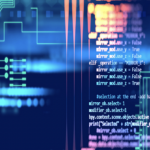
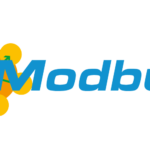
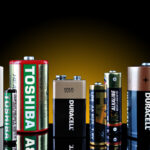
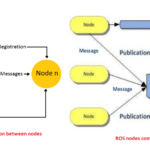
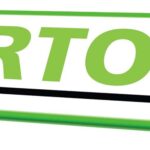
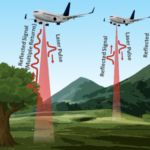

Questions related to this article?
👉Ask and discuss on Electro-Tech-Online.com and EDAboard.com forums.
Tell Us What You Think!!
You must be logged in to post a comment.